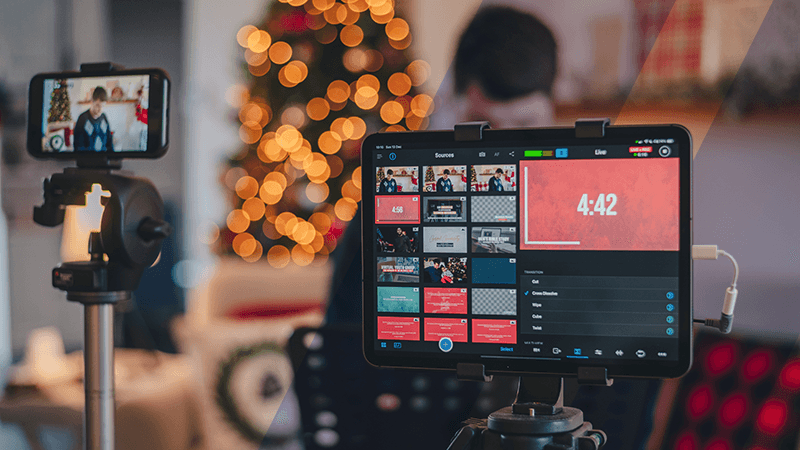Are you a business owner or a creative looking to delve into the world of design but get confused between graphic design and digital design? You're not alone.
In today's digital age, the line between these two disciplines is becoming increasingly blurred, and it can be difficult to know which one is the best fit for your creative needs.
Graphic design and digital design may seem similar on the surface, but they have some key differences that make them more suitable for different types of projects.
In this article, we'll take a closer look at the comparison of graphic design vs digital design, and help you figure out which one can fully optimize your creative production and improve your marketing and user experience.
Whether you're a business owner, designer, or just someone with a passion for design, you'll find something of value here. Let's dive in!
What is digital graphic?
Digital graphic refers to any type of graphic design that is created and edited using digital tools, such as graphic design software. Examples of digital graphics include logos, website layouts, social media graphics, banner ads, and infographics.
The importance of digital graphics in business is that they are used to create visual elements that help to communicate a company's message, branding, and values. They are used to create a cohesive visual identity across all marketing materials, whether it be a website, social media account, advertisement, or email.
Digital graphics are also used to create visual aids that help to explain complex information, such as data visualizations and infographics. Additionally, digital graphics can be used to create engaging and interactive experiences for customers, such as online product demonstrations and virtual tours of a store or facility.
Graphic design vs digital design: What are their key differences?

It is important to know the difference between digital design and graphic design because they are two distinct disciplines that have different goals, methods, and basic design principles. Let us provide you with a brief comparison of graphic design & digital design.
Graphic design is the process of creating static elements, such as typography, illustrations, and images, to communicate a message and convey information. It is a broad field that encompasses various mediums such as print design, packaging, branding, advertising, and more.
Graphic design is generally considered to be a more traditional form of design. Traditional graphic designers heavily rely on hand-drawn sketches, and most of their graphic design deliverables involve illustrations, typography, and print production techniques.
Digital design, on the other hand, is the process of creating digital content for online devices and platforms, such as websites, mobile apps, and interactive media. It is a more specialized field that focuses on the design of user interfaces, user experience, and digital graphics.
Digital artists rely heavily on software, such as graphic design, digital logo, web design, and prototyping tools, to create and edit visual designs and interactive pages.
Having a clear understanding about graphic design and digital design can help professionals to better understand the goals and methods of their field, and to make more informed decisions about the design process.
In addition, it can help them to communicate more effectively with other professionals in the field, and to understand the specific requirements and constraints of different mediums and platforms.
Graphic design and digital design: Which one is better for your business needs?
Deciding whether to use graphic design or digital design for your business can be a tricky decision. Both types of design have their own unique strengths and are suitable for different types of projects.
Here are a few things to consider when deciding which type of design is best for your business:
Medium
Graphic design is traditionally used for print materials such as brochures, posters, and packaging. Digital design, on the other hand, is primarily used for digital products such as websites, mobile apps, and interactive media.
If your business primarily deals with print materials, graphic design may be a better fit. If your business primarily deals with digital products, digital design may be a better fit.
Audience
Consider your target audience when deciding which type of design to use. Graphic design is often used to create designs that are visually appealing and easy to understand, which can be a great fit for consumer-facing businesses.
Digital design is often used to create designs that are interactive and engaging, which can be a great fit for businesses that want to connect with their audience in new and exciting ways.
Budget
Both graphic design and digital design can be costly, but digital design typically requires more specialized software and hardware, which can increase costs. If budget is a concern, graphic design may be a more affordable option.
Goal
Take into account what you want to achieve with your design. Graphic design can be used to create designs that are visually appealing and easy to understand, while digital design can be used to create interactive and engaging designs.
If your goal is to create a visually appealing design that can be used for print materials, graphic design may be the best option. If your goal is to create an interactive and engaging design that can be used for digital products, digital design may be the best option.
What are the 5 types of digital graphics?
It’s important for designers and businesses to understand the different types of digital graphics. Each type of digital graphics has its own unique properties and characteristics that can be used in different ways to communicate a message or provide an engaging experience.
Here are some of the most commonly used digital graphics every designer should know:
Raster graphics
These are digital images that are made up of a grid of pixels, and are often used for photographs, illustrations, and web design. Understanding how to work with raster graphics is important for a graphic designer and businesses because it allows them to create and edit images for use in a wide range of digital media.
Vector graphics
These are digital images that are made up of mathematical equations, and are often used for logos, illustrations, and typography. It’s crucial for digital designers to master this type of digital graphics because it allows them to create images that can be easily scaled and manipulated without losing quality.
3D graphics
It refers to digital images that have a three-dimensional representation of an object, and are often used in product visualization, gaming, animations, and special effects. This type of digital graphics is essential for a graphic designer and businesses as it allows them to create interactive and engaging experiences that can be used in a wide range of digital media.
Motion graphics
It pertains to digital graphics that are animated, and are often used in video production, commercials, and interactive elements for media. Mastering motion graphics design enables digital designers to create dynamic and engaging visual content such as marketing videos that can be used across a wide range of digital platforms.
User interface design
This type of digital graphics are created for the purpose of providing an intuitive and user-friendly interface for websites, online platforms, mobile designs, and other digital products. A graphic designer should have a good understanding of UI design to create digital products that are easy to use and navigate, which can help to improve user engagement and satisfaction.
How do digital graphics advertise?
Understanding how to use digital graphics effectively can help businesses create more effective and efficient advertising campaigns, and to reach more customers. Here are some examples of how digital graphics can be used to advertise a business, product, or service in a variety of ways:
Online ads
Digital graphics are used to create banner ads, native ads, static images, logo design and other types of online ads that are placed on websites, social media platforms, and other digital media. Graphic designers can use this to grab the attention of viewers and to encourage them to click through to a website or landing page where they can learn more about the business, product or service being advertised.
Social media graphics
Digital graphics are useful in designing engaging and shareable visual content for social media and online platforms such as Facebook, Instagram, and Twitter. These graphics can be used to promote a business, product, or service, and they can also be used to engage with customers and build a following.
Email marketing
Digital graphics can be used to create visually appealing email campaigns that are designed to promote a business, product, or service. These graphics are reliable for highlighting features, benefits, and special offers, and they can be used to encourage recipients to take action, such as signing up for a newsletter or making a purchase.
Landing pages
Digital graphics are used to create the digital interface and structure of the landing page, and to remain consistent with the overall branding and style of the website.
To sum up, by using digital graphics, a digital designer can create visually appealing landing pages that are tailored to the target audience, effectively communicate key information, and increase the chances of converting website visitors into customers.
Infographics
Digital graphics also help in creating infographics that are visually appealing and easy to understand. By using different design elements such as interactive elements, icons, charts, graphs, and illustrations, a digital designer can make the information more engaging and easier to absorb.
By using infographics, a digital designer can effectively create visual concepts communicate complex information in a visually appealing and easy-to-understand way, which can improve visual communication and build trust with users.
What are 3 main purposes of graphic design?
Graphic design is a powerful tool for businesses, organizations, and individuals alike. Here are the top 3 main purposes of graphic design in the business world and design industry:
Communicate a message
Graphic design can create digital assets that help to communicate a message or idea. This can include anything from a simple logo to a complex infographic. It’s fully utilized by many graphic designers to create a design that is easily understood and that effectively conveys the intended message.
Create a visual identity
Graphic design helps in developing a visual identity for a company, product, or service. This includes elements such as logos, typography, color schemes, and imagery. It assists graphic designers in creating a cohesive visual identity that can be used across all marketing materials and that will be easily recognizable by customers.
Engage and persuade
Graphic design can produce digital assets that will engage and persuade the audience. This can be achieved through the use of visual design elements such as imagery, color, typography and layout. Graphic designers can use it to create meaningful designs that are visually appealing and that will encourage the audience to take a desired action, improve digital presence, and solidify brand identity.
Enhance Your Retail Experience with Outsourced Customer Care for Design Feedback
Graphic design plays a crucial role in the retail industry. Outsourcing your customer care can be a strategic move to improve your design process, ensuring your visuals are not only appealing but also resonate with your target audience.
By partnering with ManilaPros, you will get a full-service, five-star customer care for your retail business. Our team of customer care professionals are screened and vetted by our recruitment powerhouse, and will go through specialized on-brand training and a rigorous certification process.
Book a call with us today to learn more about our retail customer care services.




